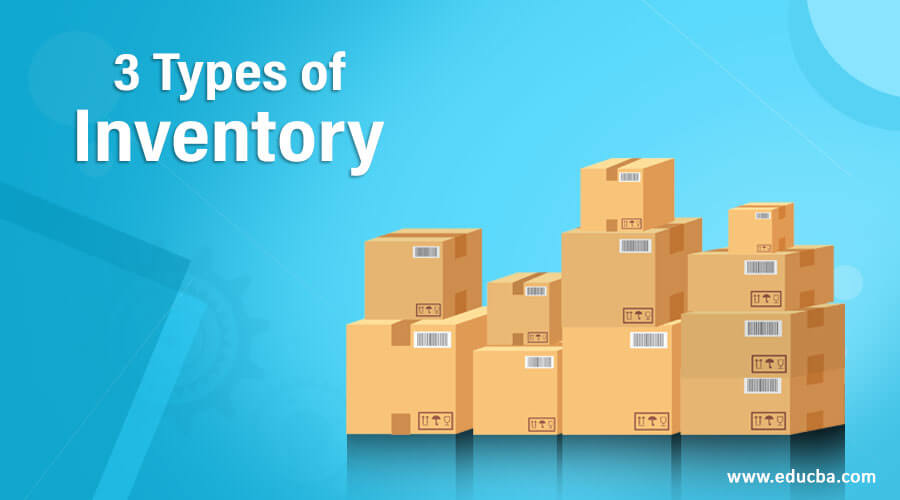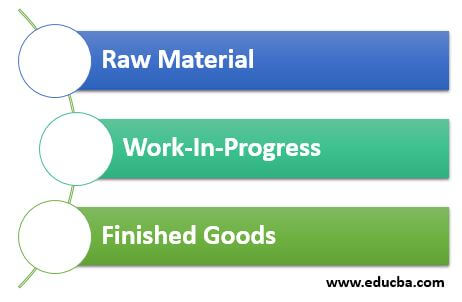Updated July 20, 2023

Introduction to Inventory
Inventory can be defined as any asset i.e. resources capable of generating future economic benefits held by any manufacturing/ service organization which are either: –
- Held for sale in the ordinary course of business; or
- Used in the production of goods organization produces and sell; or
- Or used as a raw material or any other supplies which will be consumed in the process of production or service supply.
Explanation
Inventories can be defined as any asset or resource owned by an organization which is either purchased and hold for the purpose of selling or will be used in the production of finished goods which will be sold further or any raw material or consumable supplies which are used in manufacturing or providing services. Not only goods which are directly sold are considered as inventory but also all other materials/ supplies which are consumed or gets converted into finished goods are also considered as inventory. Not only a manufacturing industry but also a service provider can have inventories. Three basic classifications of inventories are as follows:
- Raw Material: This is basic goods procured which will be converted into finished goods;
- Work-In-Progress: Type of inventory on which the production process is applied partially but is not wholly converted into finished goods at any particular point of time.
- Finished Goods: Finished goods are form of inventories on which the entire production process is applied and the product is in sellable condition.
3 Types of Inventory
3 Types of Inventory are explained below:
1. Raw Materials Inventory
Raw materials are the basic components that are used by the manufacturer to process or convert them into finished goods or subassemblies. These may be products or extracted minerals that the company or its sister concern has manufactured or extracted. Different industries require different products as raw material. Finished goods of one organization may be considered as raw material for others. Petroleum, grains, ores, minerals, chemicals, steel, paint, wood are some examples of raw material. This category of inventories are used in the manufacturing of the further product. These components then become part of a subassembly or are incorporated as finished goods. Subassemblies are used to make the final product. Optimum use of raw material is very crucial as carrying a huge amount of raw material will lead to increased carrying cost thereby mentioned increasing cost of production. Also, there are chances of inventory becoming obsolete.
Raw materials may be of two types:
Direct Raw Material: These are the components which form the part of the final products like silk which is used to make silk sarees, wood to make furniture, plastic to make bottles etc.
- Indirect Raw Material: Products which do not form part of the final product but are used in the manufacturing process like oil, screw, tools, lights, chemicals etc.
Example
Manhattan Inc. is a cloth manufacturing company. Its finished goods are jeans, shirts, T-shirts. For producing each of its finished goods, it requires various direct, indirect raw material like thread, cotton, button, Colour etc. All these products will be termed as raw material for Manhattan Inc.
2. Work in Progress Inventory
Work in progress is inventory type which is described as partially finished goods or raw materials awaiting completion. Work in progress is a concept of production and supply chain management. Components included in this are labour, overhead cost, raw materials, a cost that are incurred during each stage of production. WIP is categorized under inventory asset account in the balance sheet. The cost of WIP are subsequently added together and then transferred to the finished goods account and thereafter to the cost of sales. It does not include further costs required for its completion.
WIP is also called as in-process inventory. This terminology is common in case of manufacturing industries where products manufactured undergo various stages of operation for getting transformed into a finished product. The various cost incurred like raw materials, labor, overheads are applied as a percentage of completion or based on actual.
Example
Mon 01st December 2019 Manhattan Inc, a cloth manufacturing company has purchased raw materials like thread, cotton, button worth $50,000. It has started working during the month. During the month, it has started working upon raw materials and has applied further costs like manufacturing overheads of stitching department of $10,000. However, clothes are not reached final production stage as on 31/12/2019. Further cost like printing, colouring is yet to be applied. Therefore, such incomplete stock which is neither finished nor left as raw material will be classified as work in progress and valued at $60,000 (Raw material cost $50,000 + stitching dept. overheads – $10,000) in Manhattan Inc. books of accounts.
3. Finished Goods Inventory
Finished goods is the form of inventory on which complete manufacturing/ processing costs are incurred and the product is ready to be sold/ distributed. No further cost will be incurred in for converting this inventory. All direct indirect raw materials, labour cost, manufacturing, administration costs are applied on this. However, it may happen that organization needs to incur some selling cost like sales commission etc. Such cost does not forms part of inventory valuation.
Either organization itself has processed it into finished goods or it has procured from another company. Finished goods inventory also applies to traders who procure inventories from another organization and sale it further. Such person may does not need to classify its inventory as raw material, work in progress and finished goods as his products are itself finished goods only.
It is important for an organization to determine the level of finished goods it needs to hold and maintain based on its product’s demand. This inventory level determination helps an organization to further plan production level and related cost and funding part.
Example
Manhattan Inc. a cloth manufacturing industry has incurred following cost in manufacturing 400 units of shirts. Shirts are completely worked upon and ready for sale.
You are requested to value finished goods inventory cost: –
- Raw material – $20,000
- Direct and Indirect labour cost – $10,000
- >Manufacturing overheads – $5,000
- Administration Overheads – -$5,000
Sol. Adding up all the cost incurred, we will get $40,000 as the cost of 400 finished goods (shirts). Units of shirt produced are 400. Therefore, the cost of one piece will be $40,000/400 i.e.100 / shirt.
Conclusion
Inventory is any asset owned by an organization which has the capability of generating future economic benefits. Planning inventory level is most crucial for any organization. Inventory should be managed at an optimum level so as to avoid huge inventory holding cost. There is various holding cost associated with inventory like storage cost, invested fund cost, deadstock, spoilage, taxes and space problems. Efficient inventory management thus helps in smooth business operations and a lower cost. Not only manufacturing companies have inventories but also service industries can hold inventories. Example: an inventory of stationery used by an advocate, CPA etc.
Recommended Articles
This is a guide to 3 Types of Inventory. Here we also discuss the introduction to inventory and 3 types of inventory which include, raw materials, work in progress, and finished goods. You may also have a look at the following articles to learn more –


